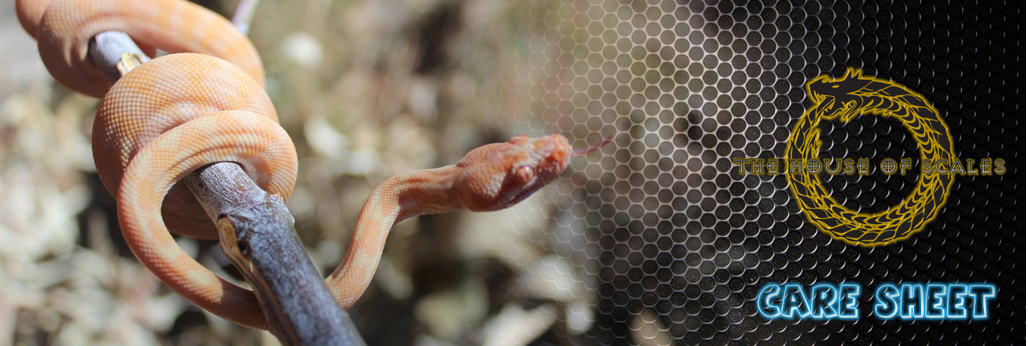Darwin Python Care and Advice Sheet
General Information
| Natural Habitat: | Primarily Northern Territory, north-east Western Australia, and western Queensland. |
| Size: | Up to approximately 2 meters in length when in captivity, however can exceed this length. |
| Life Expectancy: | Darwin pythons can live up to approximately 20 years, and in some cases longer. |
| Living Temperatures: | Day time temp of 28-30.5°C, night time temp of 22°C. Pythons will self-regulate their temperature so it’s important to have “warm and cool” areas in the enclosure. |
Please click here for a PDF version of this care sheet.
Housing, Lighting & Enclosure Setup
Enclosure: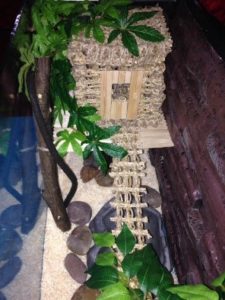
Enclosure size will depend on the size of your python. 30cm is sufficient for a hatchling however, I would recommend starting slightly bigger as hatchlings tend to grow rather quickly.
As they grow so should the enclosure size, with a 4ft (120cm in length) enclosure suitable for an adult Darwin python. You can be as creative as you like just keep everything non-toxic.
Lighting:
This will depend on the size of the enclosure and placement. Generally you will need a bulb to generate heat that will hit at least 31°C in the basking area. A UV light can also be used but is not necessary as snakes are nocturnal reptiles, however enclosure placement can allow for natural light to filter in, however keep in mind this will be filtered UV.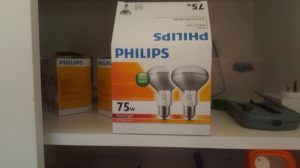
You don’t need to spend a fortune on reptile branded globes for your basking area, Bunnings has you covered. Instead of spending $20 per globe, try out a two pack of Phillips Flood lights (we mainly use the 75w globes) for $5.
Substrate:
There is a lot of conflicting information about what is the best substrate to use for a Darwin python. Some will suggest using sand, there is no major  reason to advise against this other than if you plan on feeding your python inside the enclosure you run this risk of your python consuming some sand when eating it’s meal which can become a problem during digestion in some cases, and the other reason is if you have sliding doors on your enclosure any sand in the rails makes for a terrible noise every time you open and close the doors.
reason to advise against this other than if you plan on feeding your python inside the enclosure you run this risk of your python consuming some sand when eating it’s meal which can become a problem during digestion in some cases, and the other reason is if you have sliding doors on your enclosure any sand in the rails makes for a terrible noise every time you open and close the doors.
We recommend using a coconut husk type substrate such as Kritter’s Crumble which is readily available at most pet and reptile stores and relatively inexpensive.
Backgrounds:
These can be purchased from most pet/reptile stores and will set you back anywhere from $30 for a very basic backing, well up to $300-500 for some of the more intricate designs with built in basking ledges.
The cost effective alternative is to make your own. If you would like more information about how to make your own custom backing please email The House of Scales at: thehouseofscales@outlook.com
Decorations:
When designing your enclosure it’s important to keep in mind that you want to keep the enclosure practical for your python. Darwin pythons are arboreal meaning they like to spend their time up on the limbs of trees. Placing branches that create a basking area near the heat source will make for a happy python. Other options for creating basking areas can include: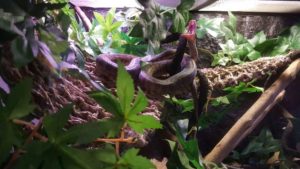
– Reptile hammocks
– Fastened ledges
– Pavers/rocks (ensure these are secure with no risk of falling)
– Even thick ropes can be fastened to create multiple basking areas
For more information about reptile hammocks and the various shapes and sizes available please visit: www.thehouseofscales.com.au or email thehouseofscales@outlook.com
We recommend to avoid using live plants in the enclosures as many are toxic to reptiles and generally will get destroyed. On top of that they can prove to be very difficult to remove for cleaning if your python accidentally mistakes them as a toilet.
Feeding Diet and Handling
What to feed your python:
Food size and type will depending on the size and type of python you have. With Darwin pythons they prefer a diet mainly consisting of rats.
A hatchling should start on pinky mice/rats and move up in size when you feel he/she is ready. Feed no more than once a week at this age.
As your python grows in size so should its food and eventually they will be eating adult rats. Feeding no more than once every 2 weeks for a juvenile, and 2 – 3 weeks for adults, will keep your python healthy without the risk of overfeeding. Do not increase the frequency that you feed your python as there is no need.
Other food you can put on the menu as “sometimes” treats are: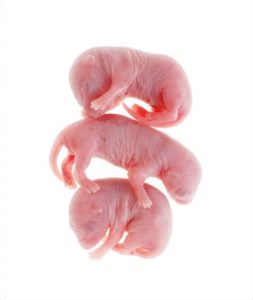
– Quail
– Chicken
– Rabbit
If you are uncertain of what to include in your pythons diet speak with your local pet/reptile shop or email The House of Scales at: thehouseofscales@outlook.com
How to feed your python:
Ensure the food is completely thawed. Place the rat (or other frozen meal) in room temperature water and allow to slowly thaw. Once thawed placed in warm water to raise its temperature and feed to your python right away.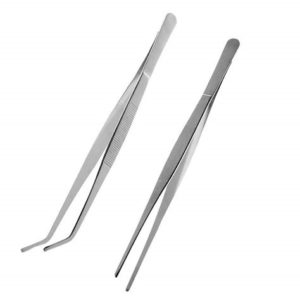
Using tongs to feed your python will ensure you don’t accidentally get your hand or finger mistaken as food which can easily happen as snakes rely on smell and heat signature to identify their meal.
Water Supply and Humidity:
A constant supply of fresh water is very important. A large bowl is preferable as that will help with the humidity levels in the enclosure (humidity in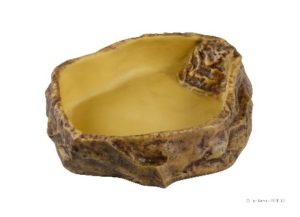 the enclosure will help to promote a clean shed and is important for your pythons health) and larger bowls are less susceptible to bacteria build up.
the enclosure will help to promote a clean shed and is important for your pythons health) and larger bowls are less susceptible to bacteria build up.
Ensure you take out and clean the water bowl at least once a week, or right away if your python accidentally mistakes it as a toilet.
Handling:
Every snake is different and depending on the environment your snake has come from, can have a strong impact on how it handles.
Young snakes are by nature very cautious and will typically bite at most things that come near them. Luckily their bite is cuter than it is painful, so this gives you plenty of time to get your hatchling used to being handled.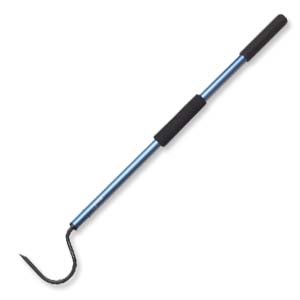
Slow movements are always best when handling a snake, with trust being the key building block to a bite free relationship. The more often you calmly handle your python the more you will build its trust in you.
If you bring an older python into your family who isn’t handling well you may want to add a snake hook to the mix to show your python that no harm is coming to it during these handling sessions. This will help you to avoid being bitten whilst still getting your python out for some 1 on 1 time.
What should I record?
Keeping a record of when you feed your python and the size of food is very important and required as a part of your licence.
Recording when your python sheds is also important as this can help you monitor its growth rate.
If you have any concerns or would just like some advice please feel free to contact The House of Scales via the following:
– Facebook: The House of Scales Reptiles
– Email: thehouseofscales@outlook.com
– Website: www.thehouseofscales.com.au

